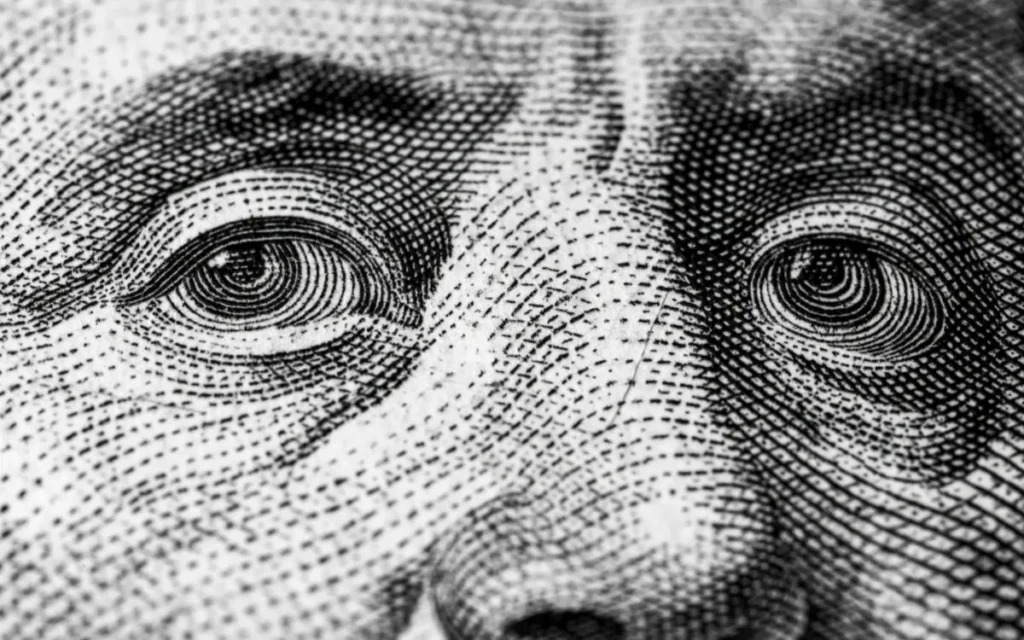Post Date: April 10, 2023
As technology continues to advance at an unprecedented rate, industries across the board are slowly but surely integrating digitalization into their operations. One of the most prominent industries to adopt this trend is fashion, transforming the way consumers shop and engage with brands.
Digitalization in fashion industry has revolutionized the production and manufacturing of clothes, streamlining the supply chain from design to delivery. It has also transformed retail operations by offering consumers a more convenient and immersive shopping experience.
In this blog, we will delve into the various ways digitalization is shaping the fashion industry, as well as exploring its potential implications on future trends in fashion.
The fashion industry has been experiencing a digital transformation, with the use of technology increasing in design, production, marketing and sales. This section will introduce the concept of digitalization in fashion industry and its impact on the industry. The impact of digital transformation on the fashion industry has been significant.
Let’s talk about the various ways in which digital technology is transforming and impacting the fashion field:
The fourth industrial revolution and its role in fashion
The Fourth Industrial Revolution has brought significant changes to various industries, and the fashion industry is no exception. The digital transformation has enabled fashion companies to streamline their operations, reduce costs, and increase efficiency.
The use of new digital tools such as 3D printing, artificial intelligence, and robotics has revolutionized the way fashion products are designed and produced. Virtual and augmented reality technologies have also enabled customers to see how a product will look on them before purchasing, leading to a more personalized shopping experience.
However, with these advancements come sustainability and ethical concerns that need to be addressed to ensure that the fashion industry is not only technologically advanced but also socially responsible.
Overall, the Fourth Industrial Revolution has played a significant role in transforming the fashion industry, paving the way for new opportunities for growth and development.
The use of digital tools in fashion design and production
The fashion industry has gone through a significant transformation with the rise of digitalization. This has led to a revolution in fashion design and production with the use of digital tools. As discussed earlier, 3D modeling tools have become an essential part of the fashion design process.
Fashion designers use Adobe Substance 3D applications and content for design. Digital 3D technology has cemented the relationship between the fashion industry and recognized production methods. Virtual and augmented reality are also used in the fashion industry for virtual try-ons, enhancing the customer experience.
With the use of digital tools, designers can create prototypes and samples with greater accuracy, compare and analyze designs on a computer, and make adjustments in real-time. This has led to an increase in efficiency and productivity, reducing the time and cost of production.
In conclusion, the use of digital tools in fashion design and production has revolutionized the industry, leading to increased creativity, efficiency, and sustainability.
But wait — there’s more.
Virtual and augmented reality in the fashion industry
In today’s digital landscape, the fashion industry is increasingly relying on cutting-edge technologies to offer customers a more immersive and engaging experience. Virtual and augmented reality are becoming a game-changer in the world of fashion, as they allow customers to ‘try on’ clothes and accessories digitally, without having to leave their homes.
This not only reduces the need for physical store visits but also enables more accurate sizing and fitting, leading to fewer returns and exchanges. Furthermore, the use of VR/AR technology in fashion design and production enables designers to create and showcase their ideas in a more efficient and cost-effective way.
Overall, the emergence of VR/AR technology in fashion is transforming the industry, but it is just one of many technological trends that we can expect to see shaping the future of fashion in the digital era.
The rise of e-commerce and its effects on traditional retail
The rise of e-commerce has had a significant impact on traditional retail, as more and more consumers shift towards online shopping platforms. This transformation has led to a drastic change in the way retailers approach their customers, as they increasingly depend on digital marketing and advertising to reach their target audience.
Additionally, e-commerce has enabled retailers to reach a wider geographical audience, without having to invest in brick-and-mortar stores. The convenience of online shopping has also significantly altered customer behavior, with consumers being able to make purchases at any time of the day, from any location.
The impact of e-commerce on traditional retail is significant and cannot be ignored, with many retailers struggling to keep up with the changing landscape. However, for those who are able to adapt to the digital era, there are many opportunities for growth and success.
Big data and analytics in fashion marketing and sales
As the fashion industry continues to undergo digital transformation, big data and analytics have become crucial tools in the realm of marketing and sales. With the vast amount of data available through e-commerce, social media, and other digital channels, fashion brands can analyze consumer behavior and preferences to better target their marketing efforts.
Additionally, pricing analysis can help identify sales opportunities for certain products that evoke certain emotions, such as fashion. Real-time retail also offers insights into customers’ shopping behaviors, allowing for immediate adjustments to marketing strategies.
Overall, the integration of big data and analytics in fashion marketing and sales has proven to be a game-changer for the industry’s ability to understand and meet consumer demand in a rapidly changing digital landscape.
Now, let’s dig a little deeper.
Sustainability And Ethical Concerns In The Digitalization on Fashion Era
The fusion of fashion and digital technology has raised ethical and sustainability concerns in the industry. The use of digital tools and e-commerce platforms has led to a rapid production cycle, resulting in an immense amount of fashion waste.
The fashion industry is responsible for 10% of global carbon emissions, and the usage of unsustainable materials further adds to the environmental impact.
The industry must adopt sustainable practices and ethical production processes to ensure that the future of fashion is not at the cost of the planet. The implementation of green technology and the usage of eco-friendly materials in production can contribute to minimizing the environmental damage.
In addition, the digitalization in fashion industry must also address ethical concerns such as labor exploitation and poor working conditions. By creating transparency in their supply chain, fashion brands can ensure fair and ethical practices. The fashion industry’s future lies in the hands of its ability to strike a balance between fashion trends and ethical practices.

Case Studies Of Successful Digital Fashion Brands And Campaigns
In this digital era, fashion brands have been successful in leveraging technology to establish their presence online through e-commerce, social media, and other digital platforms. In this section, we will explore some case studies of successful digital fashion brands and campaigns.
Consider the following examples
Glossier
Glossier is a beauty brand that has done exceptionally well in creating a unique identity and engaging with its audience through digital marketing. The brand’s success can be attributed to its minimalistic and effortless approach, which resonates well with its target audience. The brand uses social media platforms such as Instagram, Snapchat, and TikTok to engage with its customers and build brand loyalty.
Nike
Nike has been a leader in the sports apparel industry for decades. The brand has built its success through innovative designs, quality products, and exceptional marketing campaigns. The brand has used digital marketing to its advantage by creating campaigns that resonate with its target audience. Nike’s ‘Just Do It’ campaign is a great example of how a brand can create a message that is simple yet powerful and resonates with millions of people worldwide.
Zara
Zara is a Spanish clothing brand that has gained global recognition for its fast-fashion approach. The brand’s approach to digital marketing is focused on creating a seamless shopping experience for its customers through its website and mobile app. Zara’s digital marketing strategy is focused on creating a personal connection with its customers, which is achieved through targeted email campaigns, social media promotions, and personalized recommendations.
ASOS
ASOS is an online fashion and cosmetics retailer that is known for its trendy and affordable fashion. The brand has embraced digital marketing to its fullest potential, creating campaigns that engage with its target audience on a deeper level. ASOS’s digital marketing strategy is centered around its mobile app, which provides a seamless shopping experience for its customers. The brand also uses social media platforms to promote its products and engage with its audience.
Burberry
Burberry is a British luxury fashion brand that has been around for over a century. The brand has successfully adapted to the digital age by creating campaigns that showcase its timeless elegance and appeal to a younger audience. Burberry’s digital marketing strategy is centered around its social media platforms, which it uses to engage with its audience and showcase its latest collections.
In summary, these successful digital fashion brands and campaigns showcase the power of digital marketing in building a unique identity, engaging with customers, and driving sales. By embracing digital marketing, these brands have been able to reach a wider audience and build a loyal customer base that continues to support them.
Future Projections For The Fashion Industry In A Digital Landscape.
Want to know the best part?
As the fashion industry continues to embrace digitalization, the future holds much promise for innovative and sustainable practices. Advancements in artificial intelligence and data analytics provide opportunities for personalized and efficient production, while virtual and augmented reality allow for immersive experiences for consumers.
E-commerce and direct-to-consumer models will likely continue to grow, challenging traditional retail. However, issues of sustainability and ethical concerns must also be addressed in the digital fashion landscape. Brands and companies that prioritize these values may become leaders in the industry.
It is clear that the fashion industry will continue to adapt and transform in response to digital technologies, and those who are able to navigate and utilize these tools will be well-positioned for success.





